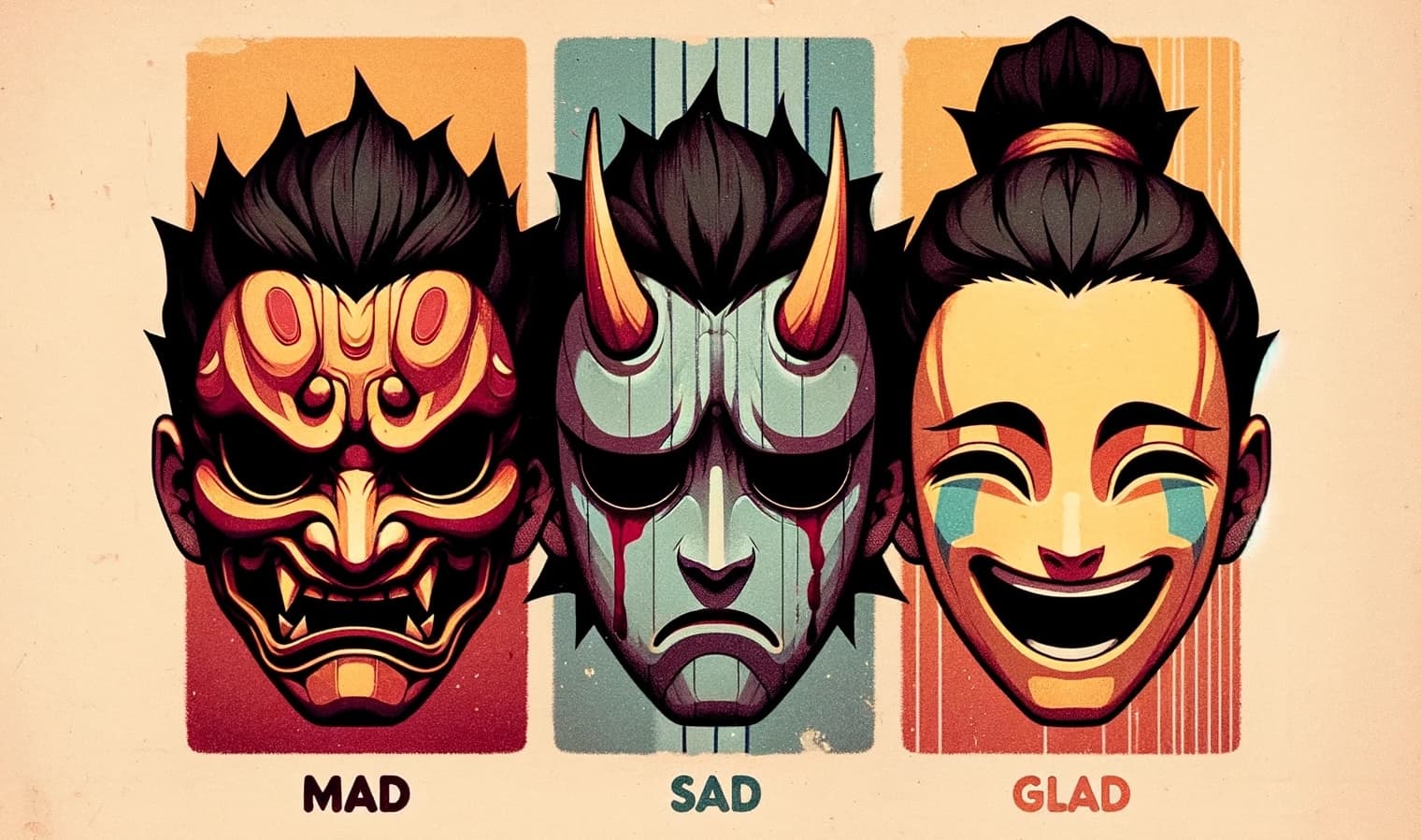
The Mad, Sad, Glad Retrospective: All You Need to Know

As agile solutions continue becoming the new norm for many organizations, future trends will focus even more on maximizing the efficiency of the value stream. Hence, effective communication and team dynamics will be paramount for success. One powerful tool that facilitates this evolution is the retrospective meeting, where teams reflect on their recent work to enhance future performance.
Among the plethora of retrospective templates, one distinctively simple and effective method that fosters a positive team environment is the 'Mad, Sad, Glad' retrospective template.
Understanding the "Mad, Sad, Glad" Retrospective Template
The "Mad, Sad, Glad" retrospective template provides a structured framework for team members to express their emotions and reflections on recent projects. It involves identifying aspects of the project that made team members feel mad, sad, or glad.
The Benefits of Using the "Mad, Sad, Glad" Retrospective
The 'Mad, Sad, Glad' retrospective is a simple and popular tool that empowers agile teams to take control of their performance and team dynamics. By categorizing feedback into what made team members mad, sad, or glad during the sprint, this technique fosters a balanced discussion of both positive and negative experiences.
One significant advantage of the 'Mad, Sad, Glad' retrospective is its promotion of emotional transparency. This allows team members to express their frustrations and disappointments, as well as their achievements and moments of joy. This comprehensive approach aids in identifying underlying issues that impact team morale and productivity while also recognizing and reinforcing positive behaviors and successful practices.
Moreover, it creates a safe and trusted space for open communication, strengthening trust and collaboration within the team, which are essential for continuous improvement in agile environments.
How the "Mad, Sad, Glad" Retrospective Works
The 'Mad, Sad, Glad' retrospective is a structured process that involves the team reflecting on the sprint. Each team member shares moments that made them feel mad, sad, or glad. These thoughts are then written on a shared digital board under the respective categories, revealing the team's sentiments.
The facilitator then leads a discussion, starting with the "mad" items to first address frustrations and potential impediments.
This is followed by the "sad" category, highlighting disappointments that may require attention or corrective action.
Finally, the team reviews the "glad" items, celebrating successes and positive experiences.
This structured yet straightforward process helps ensure all voices are heard, promotes emotional intelligence within the team, and guides actionable insights for future sprints. By systematically addressing the spectrum of emotions, teams can pinpoint specific areas for improvement and celebrate their wins, fostering a more engaged and resilient team culture.
The Potential Challenges and Opportunities of the Mad, Sad, Glad Retrospective
Implementing the "Mad, Sad, Glad" retrospective template can present several challenges and opportunities for an agile team. One potential challenge is the initial discomfort some team members might feel when expressing negative emotions like anger or sadness, which can hinder open communication.
Overcoming this requires a skilled facilitator to create a safe and non-judgmental environment where every team member feels comfortable sharing their thoughts. Additionally, balancing the discussion to ensure that the focus is not overly negative can be tricky, as too much emphasis on problems can demotivate the team.
However, these challenges are outweighed by significant opportunities. The retrospective template fosters emotional transparency and honesty, essential for identifying and addressing underlying issues that might otherwise go unspoken.
It also provides a structured way to celebrate successes, boosting team morale and reinforcing effective practices. By systematically categorizing feedback, teams can develop targeted action plans to improve both processes and team dynamics.
Ultimately, the "Mad, Sad, Glad" retrospective can transform challenges into growth opportunities, enhancing overall team performance and cohesion.
5 Expert Tips for Maximizing Effectiveness of the Mad, Sad, Glad Retrospective
You can implement the following expert practices to maximize the effectiveness of the "Mad, Sad, Glad" retrospective template:
First, ensure psychological safety by fostering an environment where team members feel comfortable expressing their true feelings without fear of judgment or retribution. This can be achieved by the facilitator modeling vulnerability and emphasizing the value of honesty.
Second, maintain a balanced focus by allocating equal time to each category: mad, sad, and glad. This prevents the discussion from becoming overly negative or positive, ensuring a comprehensive view of the sprint.
Third, use anonymous input methods to encourage participation from more reserved team members who might hesitate to speak up.
Fourth, prioritize action items by identifying common themes and recurring issues in the mad and sad categories, then collaboratively developing specific, actionable steps to address these.
Finally, celebrate the “glad” moments by acknowledging individual and team achievements, which can reinforce positive behaviors and boost morale.
By following these tips, agile teams can ensure their retrospectives are both constructive and uplifting, driving continuous improvement and team cohesion.
Takeaway
In conclusion, the "Mad, Sad, Glad" retrospective template is a powerful tool for agile teams aiming to enhance their communication and team dynamics. This method provides a structured framework for expressing emotions, which helps identify both positive and negative aspects of recent projects.
The benefits of this approach include fostering emotional transparency, creating a safe space for open communication, and promoting continuous improvement. Despite potential challenges such as initial discomfort and the need to balance discussions, the opportunities for growth and enhanced team performance are significant.
By following expert tips, such as ensuring psychological safety, maintaining balanced discussions, using anonymous input methods, prioritizing action items, and celebrating successes, teams can maximize the effectiveness of their retrospectives.
Try out the "Mad, Sad, Glad" retrospective in Team O'Clock for your next agile meeting to drive continuous improvement, strengthen team cohesion, and contribute to the overall success of your projects.








